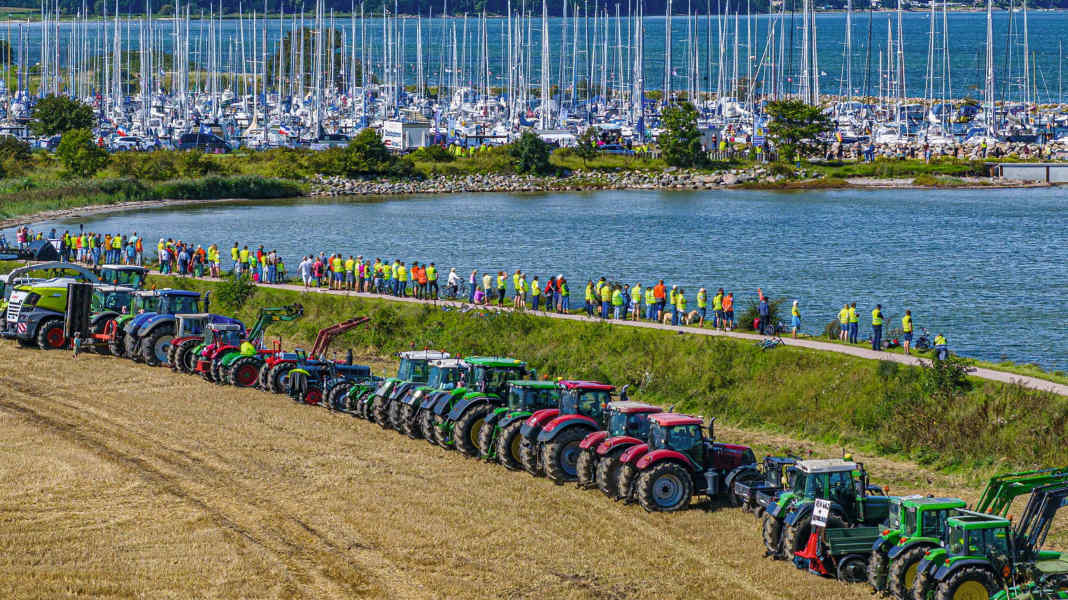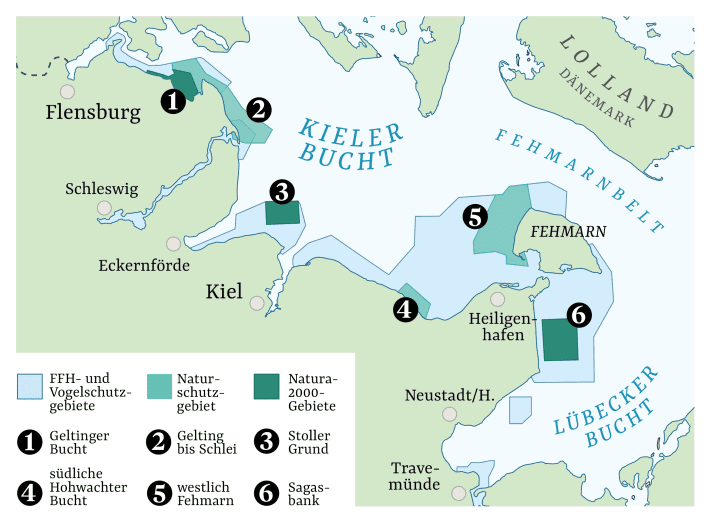
Nitrogen and phosphorus are essential nutrients for agriculture - on the one hand for plant growth and fruit development. They maximise yields and are a component of fertilisers. The problem is that when excessive amounts of fertiliser seep into the groundwater and reach the oceans via rivers, the consequences are immense. The Baltic Sea is a good example of this. The sea suffers from eutrophication, oxygen deficiency and a damaged ecosystem.
Voluntarily reducing nutrients for the protection of the Baltic Sea
The state government of Schleswig-Holstein and agricultural representatives have now sat down together and agreed on measures to better protect the Baltic Sea. The priority is to reduce nutrient input and adapt agricultural use near the Baltic Sea.
According to the Ministry of Agriculture, 20 per cent of nitrogen and phosphorus are to be saved over the next ten years. The measures set out in the agreement will be implemented voluntarily by farmers. They are an elementary component of the Baltic Sea Protection Action Plan 2030, which was launched by the state government in March 2024 as the successor to the Baltic Sea National Park.
Part of a package of measures for Baltic Sea protection
The action plan consists of a 16-point package of measures. The central aim is to improve the protection of the Baltic Sea. Among other things, 12.5 per cent of Schleswig-Holstein's Baltic Sea is to be more strictly protected and animals and plants are to be given more peace and quiet and places to retreat to.
New protected areas are planned here:

The regulations that apply in the areas are particularly relevant for sailors. For example, water sports enthusiasts will be banned from sailing in the protected areas from November to March. However, harbour entrances located in the areas will continue to be navigable and water protection and rescue will be exempt from the regulations. In summer, the ban will no longer apply; instead, there will be speed limits. Anchoring in seagrass beds will also be explicitly prohibited.
"Take regional characteristics into account"
Another pillar of the action plan is the reduction of nutrient input. This is to be achieved in cooperation with the agricultural sector with the help of the target agreement. Schleswig-Holstein's Minister of Agriculture Werner Schwarz (CDU) commented on the agreement: "The core of the agreement is the establishment of five Baltic Sea advisory councils and model regions (...). This will allow us to take into account regional characteristics and needs in order to implement measures efficiently and in an accepted manner together with local stakeholders." In these regions, local representatives are to draw up plans by autumn 2025 that show how the agreed reduction can be implemented in concrete terms.
In the debate on the protection of the Baltic Sea, farmers and associations have protested loudly in advance against possible legal restrictions. Environment Minister Tobias Goldschmidt (Greens) explained that the new agreement was aimed at farmers: "We are taking agriculture at its word and will assess the success of the agreement based on its impact on the Baltic Sea."
More about the Baltic Sea Protection Action Plan:
Criticism comes from environmentalists. For them, the target agreement is not enough; the voluntary measures do not go far enough.
Baltic Sea protection also hotly debated among water sports enthusiasts
The target agreement now addresses a point in the Baltic Sea Protection Action Plan that has also caused displeasure among water sports enthusiasts. Hans Köster, board member for environmental issues at the Schleswig-Holstein Sailing Association, criticised this to BOOTE in October: The many restrictions for water sports enthusiasts give the impression that they are the main cause of the poor condition of the Baltic Sea. However, the main problem, eutrophication caused by agriculture, lies on land. This is now being tackled with the agreed target agreement. Whether it will improve the condition of the Baltic Sea remains to be seen.

